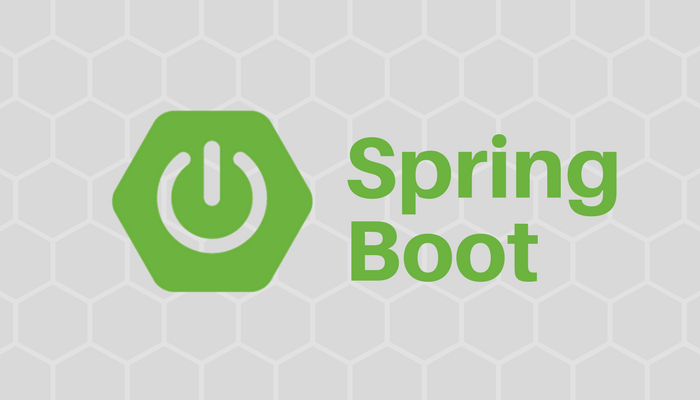Spring Boot (七): Mybatis极简配置
Spring Boot (七): Mybatis极简配置

1. 前言
ORM 框架的目的是简化编程中的数据库操作,经过这么多年的发展,基本上活到现在的就剩下两家了,一个是宣称可以不用写 SQL 的 Hibernate ,一个是对 SQL 非常友好的 Mybaties ,,两者各有特点,在企业级系统开发中可以根据需求灵活使用。发现一个有趣的现象:传统企业大都喜欢使用 Hibernate ,互联网行业通常使用 Mybatis 。
Hibernate 特点就是所有的 SQL 都用 Java 代码来生成,不用跳出程序去写(看) SQL ,有着编程的完整性,发展到最顶端就是 Spring Data Jpa 这种模式了,基本上根据方法名就可以生成对应的 SQL 了,有不太了解的可以看笔者的前两篇文章 Spring Boot (三): ORM 框架 JPA 与连接池 Hikari 和 Spring Boot (六): 为 JPA 插上翅膀的 QueryDSL。
Mybatis 初期使用比较麻烦,需要各种配置文件、实体类、Dao 层映射关联、还有一大推其它配置。当然 Mybatis 也发现了这种弊端,初期开发了 generator 可以根据表结果自动生产实体类、配置文件和 Dao 层代码,可以减轻一部分开发量;后期也进行了大量的优化可以使用注解了,自动管理 Dao 层和配置文件等,发展到最顶端就是今天要讲的这种模式了,mybatis-spring-boot-starter 就是 Spring Boot + Mybatis 可以完全注解不用配置文件,也可以简单配置轻松上手。
2. 工程实战
首先创建父工程 spring-boot-mybatis,引入全局依赖包,如下:
代码清单:spring-boot-mybatis/pom.xml
<dependencies>
<dependency>
<groupId>org.springframework.boot</groupId>
<artifactId>spring-boot-starter-web</artifactId>
</dependency>
<dependency>
<groupId>org.mybatis.spring.boot</groupId>
<artifactId>mybatis-spring-boot-starter</artifactId>
<version>2.1.0</version>
</dependency>
<dependency>
<groupId>mysql</groupId>
<artifactId>mysql-connector-java</artifactId>
<scope>runtime</scope>
</dependency>
<dependency>
<groupId>org.projectlombok</groupId>
<artifactId>lombok</artifactId>
<optional>true</optional>
</dependency>
<dependency>
<groupId>org.springframework.boot</groupId>
<artifactId>spring-boot-starter-test</artifactId>
<scope>test</scope>
</dependency>
</dependencies>
- mybatis-spring-boot-starter :目前最新版本为 2.1.0
2.1 极简 xml 版
创建子工程 spring-boot-mybatis-xml
2.1.1 配置文件
application.yml 配置文件如下:
代码清单:spring-boot-mybatis/spring-boot-mybatis-xml/src/main/resources/application.yml
server:
port: 8080
spring:
application:
name: spring-boot-mybatis-xml
datasource:
url: jdbc:mysql://localhost:3306/test?serverTimezone=Asia/Shanghai&useUnicode=true&characterEncoding=UTF-8&useSSL=false
username: root
password: 123456
driver-class-name: com.mysql.cj.jdbc.Driver
type: com.zaxxer.hikari.HikariDataSource
hikari:
auto-commit: true
minimum-idle: 2
idle-timeout: 60000
connection-timeout: 30000
max-lifetime: 1800000
pool-name: DatebookHikariCP
maximum-pool-size: 5
mybatis:
type-aliases-package: com.springboot.springbootmybatisxml.model
config-location: classpath:mybatis/mybatis-config.xml
mapper-locations: classpath:mybatis/mapper/*.xml
- 这里使用 hikari 作为数据库连接池
- Spring Boot 会自动加载
spring.datasource.*相关配置,数据源会自动注入到sqlSessionFactory中,sqlSessionFactory会自动注入到 Mapper 中。 - 这里需要指定基础配置文件和实体类映射文件的地址
mybatis-config.xml 配置文件如下:
代码清单:spring-boot-mybatis/spring-boot-mybatis-xml/src/main/resources/mybatis/mybatis-config.xml
<configuration>
<typeAliases>
<typeAlias alias="Integer" type="java.lang.Integer" />
<typeAlias alias="Long" type="java.lang.Long" />
<typeAlias alias="HashMap" type="java.util.HashMap" />
<typeAlias alias="LinkedHashMap" type="java.util.LinkedHashMap" />
<typeAlias alias="ArrayList" type="java.util.ArrayList" />
<typeAlias alias="LinkedList" type="java.util.LinkedList" />
</typeAliases>
</configuration>
2.1.2 Mapper 映射文件
代码清单:spring-boot-mybatis/spring-boot-mybatis-xml/src/main/resources/mybatis/mapper/UserMapper.xml
<mapper namespace="com.springboot.springbootmybatisxml.mapper.UserMapper" >
<resultMap id="BaseResultMap" type="com.springboot.springbootmybatisxml.model.User" >
<id column="id" property="id" jdbcType="VARCHAR" />
<result column="nick_name" property="nickName" jdbcType="VARCHAR" />
<result column="age" property="age" jdbcType="INTEGER" />
<result column="create_date" property="createDate" jdbcType="TIME"/>
</resultMap>
<sql id="Base_Column_List" >
id, nick_name, age, create_date
</sql>
<select id="getAll" resultMap="BaseResultMap" >
SELECT
<include refid="Base_Column_List" />
FROM user
</select>
<select id="getUser" parameterType="java.lang.String" resultMap="BaseResultMap" >
SELECT
<include refid="Base_Column_List" />
FROM
user
WHERE id = #{id}
</select>
<insert id="insertUser" parameterType="com.springboot.springbootmybatisxml.model.User">
<selectKey keyProperty="id" resultType="java.lang.String" order="BEFORE">
select uuid() as id from dual
</selectKey>
INSERT INTO
user
(id, nick_name, age, create_date)
VALUES
(#{id}, #{nickName}, #{age}, #{createDate})
</insert>
<update id="updateUser" parameterType="com.springboot.springbootmybatisxml.model.User">
UPDATE
user
SET
<if test="nickName != null">nick_name = #{nickName},</if>
<if test="age != null">age = #{age},</if>
<if test="createDate != null">create_date = #{createDate}</if>
WHERE
id = #{id}
</update>
<delete id="deleteUser" parameterType="java.lang.String">
DELETE FROM
user
WHERE
id = #{id}
</delete>
</mapper>
- namespace :需配置对应的接口
- 实现了简单的 CRUD 操作
- 新增数据时选用 UUID 作为主键
- 动态条件可使用
<if>标签作判断
2.1.3 Mapper 层代码
代码清单:spring-boot-mybatis/spring-boot-mybatis-xml/src/main/java/com/springboot/springbootmybatisxml/mapper/UserMapper.java
public interface UserMapper {
List<User> getAll();
User getUser(String id);
Long insertUser(User user);
Long updateUser(User user);
Long deleteUser(String id);
}
- 这里仅需定义接口方法, mybaties 会自动帮我们调用 xml 映射文件中的代码。
2.1.4 启动主类
代码清单:spring-boot-mybatis/spring-boot-mybatis-xml/src/main/java/com/springboot/springbootmybatisxml/SpringBootMybatisXmlApplication.java
@SpringBootApplication
@MapperScan("com.springboot.springbootmybatisxml.mapper")
public class SpringBootMybatisXmlApplication {
public static void main(String[] args) {
SpringApplication.run(SpringBootMybatisXmlApplication.class, args);
}
}
- 在启动主类上配置
@MapperScan或者直接在 Mapper 类上增加注解@Mapper,两种方法起到的结果是一样的。不过建议选择在启动主类上配置@MapperScan,不然在每个 Mapper 类上加注解也麻烦,还容易漏加。
2.2 无配置文件注解版
2.2.1 配置
配置文件 application.yml 如下:
代码清单:
mybatis:
type-aliases-package: com.springboot.springbootmybatisannotation.model
- 剩余部分和上面一致, mybatis 的配置仅需配置这一条足够
2.2.2 Mapper 类
注解版的核心就是这个类,所有的 SQL 都在这个类里面,代码如下:
代码清单:
public interface UserMapper {
@Select("select * from user")
@Results({
@Result(property = "id", column = "id"),
@Result(property = "nickName", column = "nick_name"),
@Result(property = "age", column = "age"),
@Result(property = "createDate", column = "create_date")
})
List<User> getAll();
@Select("SELECT * FROM user WHERE id = #{id}")
@Results({
@Result(property = "nickName", column = "nick_name")
})
User getUser(String id);
@Insert("INSERT INTO user(id, nick_name, age, create_date) VALUES(#{id}, #{nickName}, #{age}, #{createDate})")
@SelectKey(keyProperty = "id", resultType = String.class, before = true, statement = "select uuid() as id from dual")
Long insertUser(User user);
@Update("UPDATE user SET nick_name = #{nickName}, age = #{age} WHERE create_date = #{createDate}")
Long updateUser(User user);
@Delete("DELETE FROM user WHERE id = #{id}")
Long deleteUser(String id);
}
- @Select 是查询类的注解,所有的查询均使用这个
- @Result 修饰返回的结果集,关联实体类属性和数据库字段一一对应,如果实体类属性和数据库属性名保持一致,就不需要这个属性来修饰。
- @Insert 插入数据库使用,直接传入实体类会自动解析属性到对应的值
- @Update 负责修改,也可以直接传入对象
- @delete 负责删除
注意:使用 # 符号和 $ 符号是不同的
#{}
使用 #{} 意味着使用的预编译的语句,即在使用 jdbc 时的 preparedStatement , sql 语句中如果存在参数则会使用 ? 作占位符。
${}
使用 ${} 时的sql不会当做字符串处理,是什么就是什么,如上边的语句:select * from table1 where id=${id} 在调用这个语句时控制台打印的为:select * from table1 where id=2 ,假设传的参数值为2
从上边的介绍可以看出这两种方式的区别,最好是能用 #{} 则用它,可以防止 sql 注入,且是预编译的,在需要原样输出时才使用 ${} 。
3. 小结
两种模式各有特点,注解版适合简单快速的模式,其实像现在流行的这种微服务模式,一个微服务就会对应一个自已的数据库,多表连接查询的需求会大大的降低,会越来越适合这种模式。另外插一句, Hibernate 对单表的支持是非常好的,为什么不选用 Spring Boot JPA + QueryDSL呢?
Xml 配置模式比较适合大型项目,可以酣畅淋漓的写 SQL ,可以灵活的动态生成 SQL ,方便调整 SQL 。
4. 示例代码
5. 参考
http://www.ityouknow.com/springboot/2016/11/06/spring-boot-mybatis.html
Spring Boot (七): Mybatis极简配置的更多相关文章
- spring boot(七)mybatis多数据源解决方案
说起多数据源,一般都来解决那些问题呢,主从模式或者业务比较复杂需要连接不同的分库来支持业务.我们项目是后者的模式,网上找了很多,大都是根据jpa来做多数据源解决方案,要不就是老的spring多数据源解 ...
- 太妙了!Spring boot 整合 Mybatis Druid,还能配置监控?
Spring boot 整合 Mybatis Druid并配置监控 添加依赖 <!--druid--> <dependency> <groupId>com.alib ...
- Spring Boot 整合 Mybatis 实现 Druid 多数据源详解
摘要: 原创出处:www.bysocket.com 泥瓦匠BYSocket 希望转载,保留摘要,谢谢! “清醒时做事,糊涂时跑步,大怒时睡觉,独处时思考” 本文提纲一.多数据源的应用场景二.运行 sp ...
- Spring Boot 2.x 多数据源配置之 MyBatis 篇
场景假设:现有电商业务,商品和库存分别放在不同的库 配置数据库连接 app: datasource: first: driver-class-name: com.mysql.cj.jdbc.Drive ...
- spring boot集成mybatis(3) - mybatis generator 配置
Spring Boot 集成教程 Spring Boot 介绍 Spring Boot 开发环境搭建(Eclipse) Spring Boot Hello World (restful接口)例子 sp ...
- spring boot + druid + mybatis + atomikos 多数据源配置 并支持分布式事务
文章目录 一.综述 1.1 项目说明 1.2 项目结构 二.配置多数据源并支持分布式事务 2.1 导入基本依赖 2.2 在yml中配置多数据源信息 2.3 进行多数据源的配置 三.整合结果测试 3.1 ...
- Spring Boot 整合MyBatis(1)
这篇文章介绍如何在Spring boot中整合Mybatis,其中sql语句采用注解的方式插入.后续文章将会介绍,如何使用xml方式. SSM SSH框架已经满足轻量级这个需求了,但是对于开发人员而言 ...
- spring boot集成mybatis(1)
Spring Boot 集成教程 Spring Boot 介绍 Spring Boot 开发环境搭建(Eclipse) Spring Boot Hello World (restful接口)例子 sp ...
- spring boot集成mybatis(2) - 使用pagehelper实现分页
Spring Boot 集成教程 Spring Boot 介绍 Spring Boot 开发环境搭建(Eclipse) Spring Boot Hello World (restful接口)例子 sp ...
随机推荐
- springboot2.X 使用spring-data组件对MongoDB做CURD
springboot2.X 使用spring-data组件对MongoDB做CURD 使用背景 基于快速开发,需求不稳定的情况, 我决定使用MongoDB作为存储数据库,搭配使用spring-data ...
- Socket I/O模型之select模型
socket网络编程中有多种常见的I/O模型: 1.blocking阻塞 2.nonblocking非阻塞 3.I/O multiplexing复用 4.signal driven 5.asynchr ...
- P2050 [NOI2012]美食节 动态连边优化费用流
题意 类似的一道排队等候,算最小总等待时间的题目. 思路 但是这道题的边数很多,直接跑会tle,可以动态加边,就是先连上倒数第一次操作的边,跑一遍费用流,然后对使用了倒数第一条边的点,连上相应的倒数第 ...
- Array List和Linked List实现分析
一,前言 先来一张Collection集合图. 今天分享一些关于Collection集合中的List,讲真的集合这东西在网上真是老生常谈了.说实话连本人都觉得腻了(哈哈),但是话又说回来,整个 ...
- Redis哨兵模式实现集群的高可用
先了解一下哨兵都 做了什么工作:Redis 的 Sentinel 系统用于管理多个 Redis 服务器(instance), 该系统执行以下三个任务: 监控(Monitoring): Sentinel ...
- c语言实现名值对通过key查找value
需求.例如: 1." key1 = value1 " 通过"key1"从该字符串中查找出"value",value去除前后空格 2.&quo ...
- zookeeper的未授权访问漏洞解决
zookeeper的基本情况 zookeeper是分布式协同管理工具,常用来管理系统配置信息,提供分布式协同服务.zookeeper官网下载软件包,bin目录下有客户端脚本和服务端脚本.另外还有个工具 ...
- Java中的java.lang.Class API 详解
且将新火试新茶,诗酒趁年华. 概述 Class是一个位于java.lang包下面的一个类,在Java中每个类实例都有对应的Class对象.类对象是由Java虚拟机(JVM)自动构造的. Class类的 ...
- iptables的删除命令中的相关问题
最近在做一个VPN中间件的配置工作,在配置iptables的时候,当用户想删除EIP(即释放当前连接),发现使用iptables的相关命令会提示错误. iptables: Bad rule (does ...
- Netty源码分析 (九)----- 拆包器的奥秘
Netty 的解码器有很多种,比如基于长度的,基于分割符的,私有协议的.但是,总体的思路都是一致的. 拆包思路:当数据满足了 解码条件时,将其拆开.放到数组.然后发送到业务 handler 处理. 半 ...
